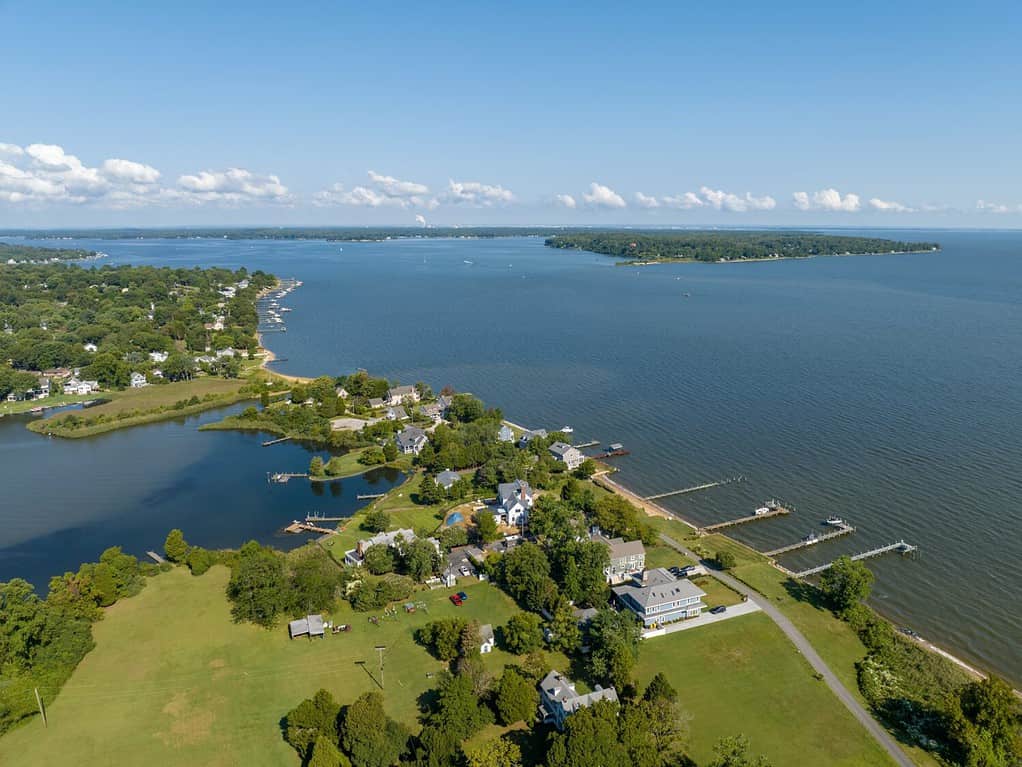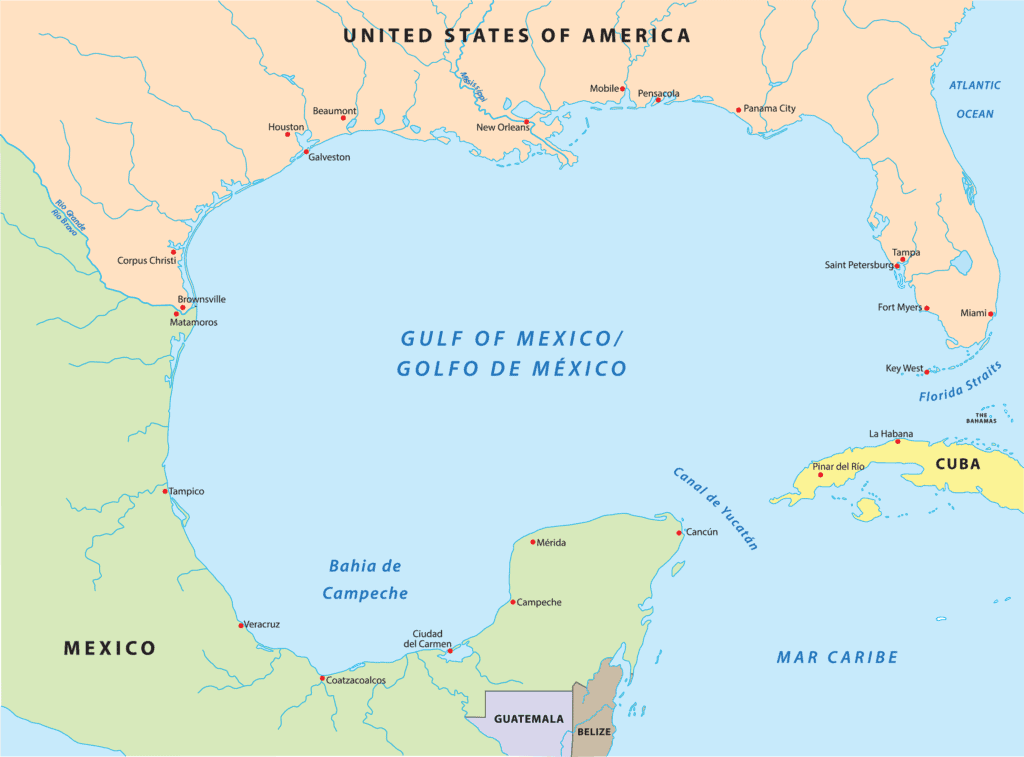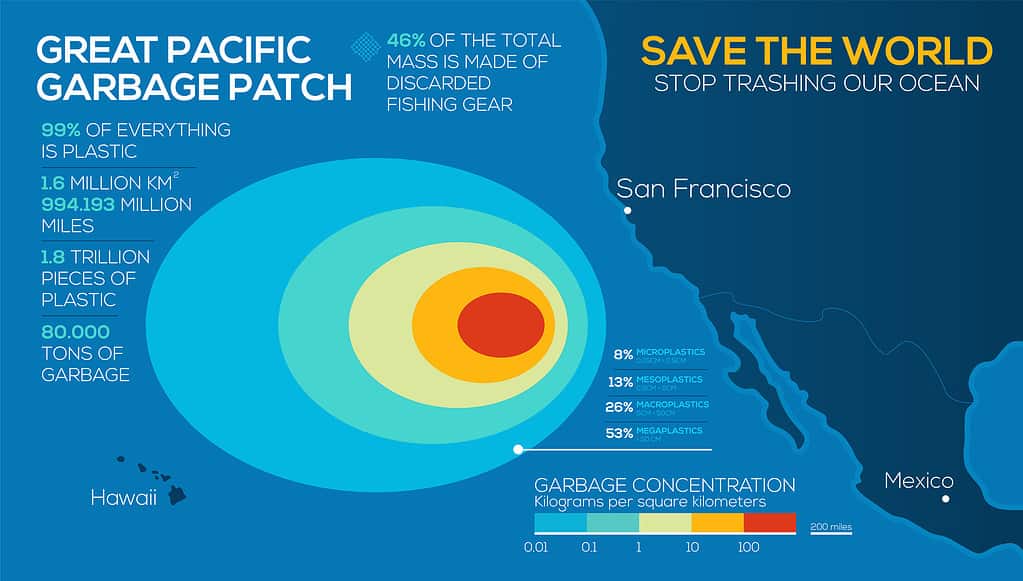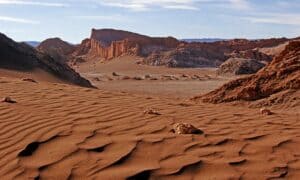About 40 percent of Earth’s surface is occupied by ocean deserts. However, this number is growing as climate change continues to progress. This article covers a few of these places, though the planet contains more than five ocean deserts. What they are and why they exist will be discussed in detail.
What Is an Ocean Desert?
Ocean deserts are defined by the lack of nutrients and oxygen in the ocean’s water in a particular spot. When nutrient resources are low, or oxygen is depleted, the area’s life is drastically reduced.
Some ocean deserts are also called dead zones. The planet has over 400 dead zones, though some are seasonal. This means that they’re only unsuitable for flourishing life during certain types of the year.
Why Do Ocean Deserts Exist?
Ocean deserts exist because they are starved of oxygen, also called aquatic hypoxia. This happens because excess nitrogen runoff from agriculture and manufacturing feeds phytoplankton.
This causes massive blooms, which overfeeds bottom-dwelling microorganisms as the phytoplankton die. This overfeeding depletes oxygen in the lower water column, quickly affecting the oxygen content of all water levels.
A hallmark of ocean deserts far away from land is a lack of nutrients in the water. This is caused by air and ocean currents. Nutrients deep within the ocean cannot mix with upper layers, which keeps life, like phytoplankton, from developing in the upper layers of the water.
The majority of ocean deserts lie within the subtropical zone of the globe. These are the same latitudes in many of the world’s deserts.
In subtropical latitudes, high-pressure weather systems are prevalent. High-pressure systems are associated with heat and cloudless conditions. This allows the sun to bake away phytoplankton and nutrients.
Gyres cause the major ocean deserts. A gyre is a water vortex that exists because of a combination of currents and winds. The circular motion keeps nutrients from coming to the surface from the depths and from flowing or blowing into the area.
5 of the Ocean Deserts on Earth:
| Name of Ocean Desert | Location of Ocean Desert | Size of Ocean Desert | |
|---|---|---|---|
| 1 | Chesapeake Bay Dead Zones | Eastern United States | 2 Square Miles |
| 2 | Gulf of Mexico Dead Zone | Southern United States | 7775 Square Miles |
| 3 | Baltic Sea Dead Zones | Northern Europe | 27,000 Square Miles |
| 4 | Northern Pacific Subtropical Gyre | North Pacific Ocean | 7.7 Million Square Miles |
| 5 | Southern Pacific Gyre | South Pacific Ocean | 23 Million Square Miles |
1. Chesapeake Bay Dead Zones

The Chesapeake Bay Dead Zones were some of the first identified worldwide.
©tokar/Shutterstock.com
Every summer, dead zones form in the Chesapeake Bay on the East Coast of the United States. These dead zones can occupy up to 40 percent of the bay, depending on annual environmental conditions. For example, more pollutants are dragged into the bay in stormy years, causing more problems.
Agricultural runoff is causing the dead zones in Chesapeake Bay. These dead zones are focused around river openings and near the bottom of the bay in its deeper parts.
The consequences of seasonal hypoxia are leading to a change in the bay’s ecosystem. Jellyfish are starting to take over while populations of animals like striped bass, crabs, and oysters are falling.
The Chesapeake Bay Dead Zones were some of the first identified worldwide. Scientists began studying what was happening in the region in the 1970s, and it’s believed the dead zone has reduced in size since the 1960s.
2. Gulf of Mexico Dead Zone

Mississippi River runoff has created a seasonal ocean desert from Alabama to Texas.
©Rainer Lesniewski/Shutterstock.com
The Gulf of Mexico Dead Zone is an area near the southern United States where polluted water from the Mississippi River has caused an ocean desert. Farmers upriver in places like the Midwest put too much fertilizer in their fields, which washes into the river system. From there, these chemicals make their way to the Gulf of Mexico.
This dead zone caused by toxic runoff is the second largest in the world. Depending on yearly conditions, the deadly bouts of hypoxia begin sometime in early spring and last through the end of the fall. This seasonal period gets bigger every year.
The Gulf of Mexico Dead Zone is approximately 7775 square miles in size, though this changes yearly. Coastal regions from Alabama to Texas are deeply impacted. This is especially true for the shrimping industry, which must travel farther away from the coast than desired to find suitable food.
3. Baltic Sea-Dead Zones

The Baltic Sea hosts 7 of Earth’s ten largest dead zones in marine environments.
©Juan_Hernandez/Shutterstock.com
Seven of the ten largest dead zones affecting marine environments exist in the Baltic Sea in Northern Europe. These dead zones are caused by human sewage and agricultural runoff.
The decline in Baltic cod because of overfishing is worsening the dead zones in this region. That’s because small foraging fish called sprats are prey to cod. These sprats eat zooplankton, and zooplankton eat algae.
Since there aren’t as many cod, there are too many sprats. The sprats eat so much zooplankton that algae grow unchecked. This algae then chokes the ecosystem by causing hypoxia via decomposition.
4. Northern Pacific Subtropical Gyre

Within the Northern Pacific Subtropical Gyre sits the Great Pacific Garbage Patch.
©ipeggas/iStock via Getty Images
The Northern Pacific Subtropical Gyre is about 7.7 million square miles in size. It is caused by the clockwise currents created by the North Pacific, California, North Equatorial, and Kuroshio ocean currents.
The Great Pacific Garbage Patch is in this gyre. This patch is a massive area of microplastics clouding the water. As trash drifts around the Pacific, it slowly busts apart into tiny pieces before it settles in the middle of the gyre’s swirl.
5. Southern Pacific Gyre

Microplastics smaller than rice grains exist in the largest ocean desert on Earth.
©iStock.com/pcess609
About 10 percent of the planet’s surface is occupied by the most significant ocean desert called the Southern Pacific Gyre. The middle of this gyre contains the oceanic pole of inaccessibility, the place in the ocean that’s the farthest away from any dry land. Because current and wind conditions keep almost all nutrients and dust from reaching the area, the water here is the clearest on Earth.
The Southern Pacific Gyre borders Australia on its west side, and South America defines the east. To the south, the Antarctic Circumpolar current is the border of the ocean desert. The north stretches to the equator.
Within this gyre exists the South Pacific Garbage Patch. It isn’t as big as the famous Great Pacific Garbage Patch and isn’t observable on satellites. It’s mostly made of plastic particles smaller than rice grains that extend throughout the water column.
The photo featured at the top of this post is © Rich Carey/Shutterstock.com
Thank you for reading! Have some feedback for us? Contact the AZ Animals editorial team.







